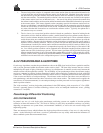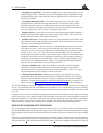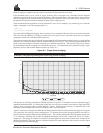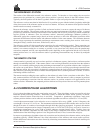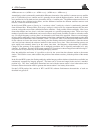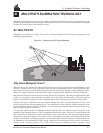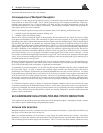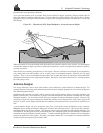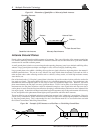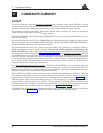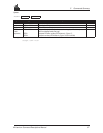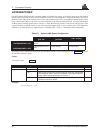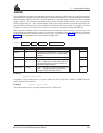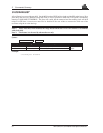
B Multipath Elimination Technology
MiLLennium Command Descriptions Manual 63
possible under actual operating conditions.
Try to place the antenna as far as possible from obvious reflective objects, especially reflective objects that are
above the antenna’s radiation pattern horizon. Close-in reflections will be stronger, and typically have a shorter
propagation delay allowing for autocorrelation of signals with a propagation delay of less than one
C/A code chip
(300 metres).
Figure B-2 Illustration of GPS Signal Multipath vs. Increased Antenna Height
When the antenna is in an environment with obstructions and reflective surfaces in the vicinity, it is advantageous
to mount the antenna as high as possible to reduce the obstructions, as well as reception from reflective surfaces,
as much as possible.
Water bodies are extremely good reflectors of
GPS signals. Because of the short wavelengths at GPS frequencies,
even small ponds and water puddles can be a strong source of multipath reception, especially for low angle
satellites. Thus, it can be concluded that water bodies such as lakes and oceans are among the most troublesome
multipath environments for low angle signal reception. Obviously, water body reflections are a constant problem
for ocean going vessels.
Antenna Designs
Low angle reflections, such as from water bodies, can be reduced by careful selection of antenna design. For
example, flat plate microstrip patch antennas have relatively poor reception properties at low elevation angles near
their radiation pattern horizon.
Quadrifilar helix antennas and other similar vertically high profile antennas tend to have high radiation gain
patterns at the horizon. These antennas, in general, are more susceptible to the problems resulting from low angle
multipath reception. So, for marine vessels, this type of antenna encourages multipath reception. However, the
advantages of good low angle reception also means that satellites can be acquired more easily while rising in the
horizon. As well, vessels subject to pitch and roll conditions will experience fewer occurrences of satellite loss of
lock.
A good antenna design will also incorporate some form of left hand circular polarization (
LHCP) rejection.
Multipath signals change polarization during the refraction and reflection process. This means that generally,
multipath signals may be
LHCP oriented. This property can be used to advantage by GPS antenna designers. If a
GPS antenna is well designed for RHCP polarization, then LHCP multipath signals will automatically be attenuated
somewhat during the induction into the antenna. To further enhance performance, antennas can be designed to
increase the rejection of
LHCP signals. NovAtel’s GPSAntenna model 501 is an example of an antenna optimized
to further reject
LHCP signals by more than 10 dB.



